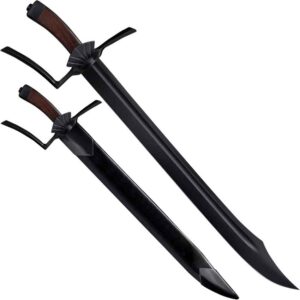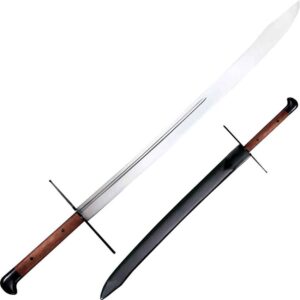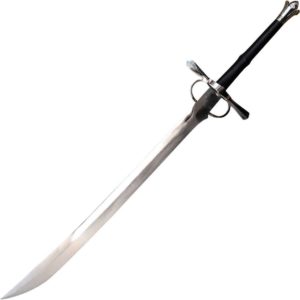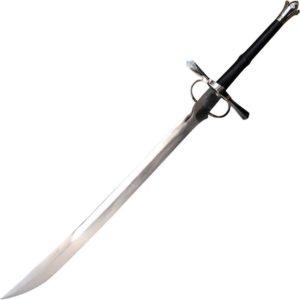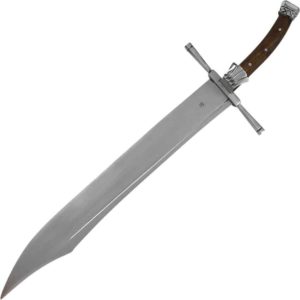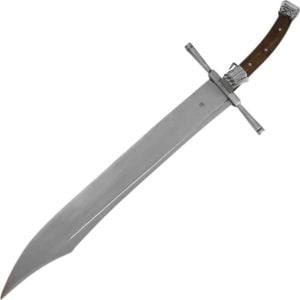Falchion Sword
Medieval times, a blend of brutality and romance, captivate us. Our collection of falchions at Medieval Collectibles invites you to immerse yourself in this bygone era.
Our falchions, ranging from cleaver to cusped designs, are hand-crafted and authentic replicas. Display them in your office or home or medieval reenactments.
Find the Perfect Cleaver Falchions Sword Now
Medieval Collectibles offers these swords at reasonable prices. Whether you seek a battle-ready or decorative piece, our falchions come in various styles to meet your needs.
Enhance your falchion sword with the right fashion: Dress up as a European nobility with our sword products, complete with a belt to look sharp. Enjoy dressing up as a guard from the period, often depicted with this sword. Shop now to enhance your collection of medieval weaponry, armor, clothing, and accessories.
Frequently Asked Questions
What Is a Falchion Sword?
A falchion is a medieval, single-handed sword with a noticeable edge. The sharp weapon is notable for its very thin blade and quick slashing capabilities. Originating in Europe, the name falchion may derive from the French word fauchon and the Latin falx, referring to a sickle–reflecting its overall length and non-straight blade.
Falchion swords, known for their unique non-straight design, typically do not have a skinny blade. Unlike medieval swords designed for thrusting, the falchion is characterized by a wider and heavier blade. This design for the entire sword allows for more weight in the strike, making the falchion effective for chopping and slashing.
The blade length of a falchion is more comparable to that of a cleaver, and it offers a different kind of functionality compared to thinner, lighter swords.
Are Medieval Falchions Similar to a Sax or Scramasax?
Falchions, derived from the sax, are used against lighter armor in medieval art by infidels, footmen, and knights. They are entirely European. Some historians link the falchion sword to the Dark Ages’ long knife, the seax or scramasax.
Some falchions resemble a large meat cleaver or machete, which were found in different forms across Western Europe from the 11th to the 16th century. These chopping weapons are similar in function to other contemporary weapons. Given their unique sword design, enemies seeing this weapon’s edge won’t have any hope of resistance.
How Is Falchion Pronounced?
There’s often confusion about how to pronounce falchion. Its known phonetic spellings are / fɔːltʃən / and / fȯl-chən /.
Who Uses a Medieval Falchion?
The falchion is considered a peasant’s sword, used in everyday life outside battle. Few actual swords have survived–but those that have, like some ancient falchions, show its widespread use across social classes.
What Does a Falchion Look Like?
The falchion can resemble a meat cleaver instead of a traditional sword, with the most famous example being the Conyers Falchion. Past its hilt and pommel is a wide blade with a secondary bevel. This sharp blade beyond the hilt differs from typical 14th-century sword designs and is said to inspire the vorpal blade in “Jabberwocky.”
There are also the cleaver falchions and the cusped falchions. An example weapon is the Thorpe Falchion, which has a unique design that features a single edge and a slightly curved blade, resembling German Messer knives.
How Authentic Are Falchion Replicas Online?
At Medieval Collectibles, we ensure our replicas are historically accurate, with dimensions and weight that reflect the original blade designs. Our medieval falchions meet the perfect balance for display, battle reenactments, and costume accessories.

